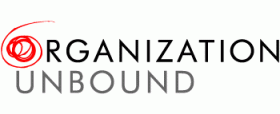-
 The theme of vulnerability that Tana introduced a few posts ago is an important one for me. Like Tana, I have noticed that one of the strongest threads running through expressive organizations I have spent time with is their willingness to face up to and explore their vulnerability. At a personal level, people share their struggles with each other in simple and unforced but surprisingly frank ways. Many people contrast the authenticity that this sort of sharing brings with their experiences in other organizations.
The theme of vulnerability that Tana introduced a few posts ago is an important one for me. Like Tana, I have noticed that one of the strongest threads running through expressive organizations I have spent time with is their willingness to face up to and explore their vulnerability. At a personal level, people share their struggles with each other in simple and unforced but surprisingly frank ways. Many people contrast the authenticity that this sort of sharing brings with their experiences in other organizations.“We are actually genuine and transparent, and there is no person on the staff that doesn’t know that I’m in a depression here, and it doesn’t matter. They are like, “It’s part of you – it’s part of being a real genuine human being.” And it’s fine. It’s all right. You just fit right in. You don’t have to pretend. I get to be me.” (Elementary School Teacher)
“I had a depression. One of the things that kept me coming here was talking about the depression in private with some of the staff here. It’s a big thing to me, because this place accepts that you cannot always be happy, which is not the case in other places. I had a training as a camp counselor a few years ago, and they would ask you to always be positive.” (Community Organization Volunteer )
COCo’s increasing openness (described in Tana’s post) is a great example of a healthy vulnerability at an organizational level. I’ve seen a similar openness in other places – an organizational ease with “unknowing” that can greatly energize and connect people who find themselves working together on challenging, creative tasks. When organizations stop trying to look perfect to members, partners, funders, etc., they are free to experiment with novel approaches and to seek whatever kind of guidance and help they feel they might need.
“I can’t tell you how many times my co-director and I looked at each other and we’d say, “Do you know what to do? I don’t know what to do?” In those first years, with those founding teachers, we were really building the plane as we flew it. We really didn’t know how you put together a handbook, and we really didn’t know how to discipline, and we really didn’t know how to do data entry . . . So I think there was a spirit of, ‘Can you guys help us run the school, because many of you have more experience than we have. You’ve had different experiences. You are bringing all this stuff to the table, and God help us if you don’t bring it, because we really need it.’ We didn’t do it intentionally. It’s not like we were manipulating the situation. We genuinely came in and were like, ‘Help us start this school.’ ” (Elementary School Executive Director)
Perhaps that sort of open, experimental, unknowing spirit is common in startups, but the school above and other particularly vital organizations I know manage to sustain that spirit even as they mature.
Unknowing




One Response and Counting...
On that “spirit” – we just received a letter from one of our funders that indicated an interest in our experimentation and risk-taking but in the next sentence, they were questionning our “searching” as a potential lack of clear direction. The letter also went on to congratulate us on our most exciting upcoming programming. Though the letter was very positive, it also related uncertainty about our “close to the edge” approach, i.e. can so much activity be sustained on such limited resources ? This “fear” on their behalf is predictable when seen through the lens of traditional directorship and control – when looked at instead through the lens of “chaos” theory (my simple understanding of it) and values of trust and self-organising, it’s about supporting activities that are initiated by driven, autonomous artists whose projects can attract distinct funding (above our operational). This ensures sustained energy for the duration of the project as the “leader” is working toward furthering his or her own practice but with the support and resources of the organisation in a “commensalist” relationship. The art practices once limited to the walls of the gallery space have now crossed over into operating, bringing a healthy dose of self reflexion and critique of how we do things, and for whom. It is a bit scary and even upsetting at times; but for every “agony” comes a fantastic epiphany that leads to the inevitable… euhhh why didn’t we think of that sooner? well, the short answer : we just weren’t there yet.